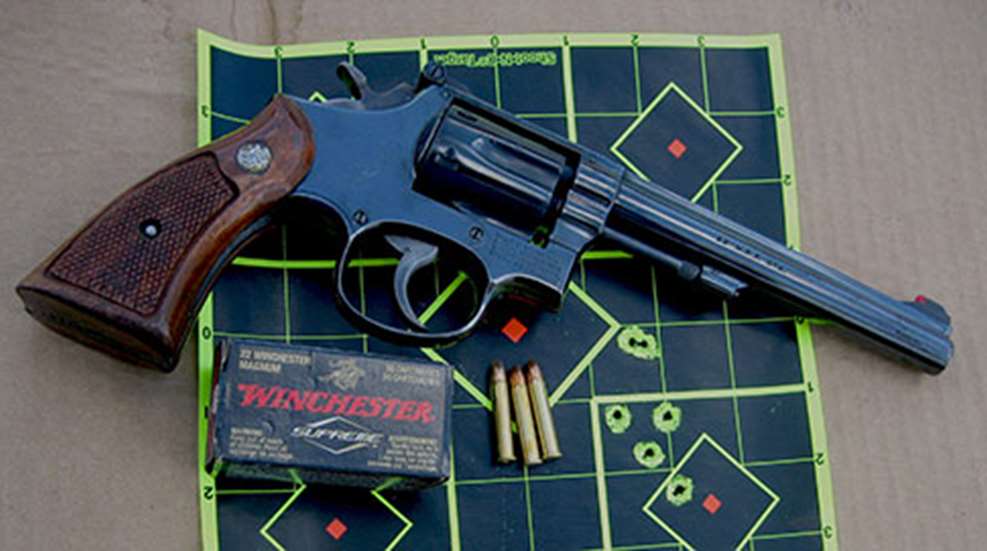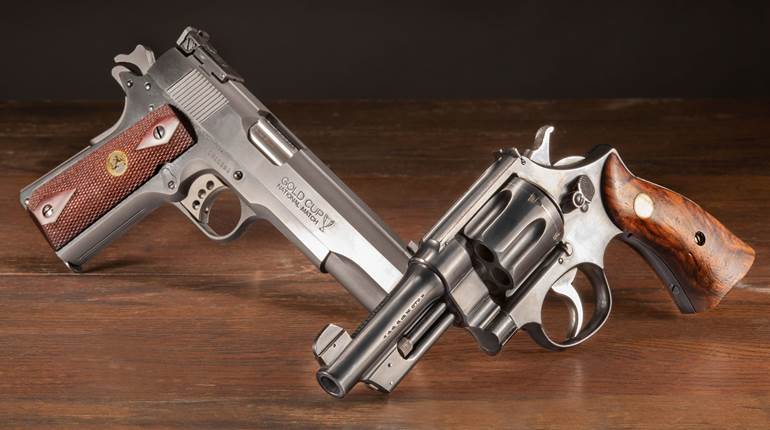
In 1959 the folks at Olin/Winchester decided to offer a rimfire cartridge with some extra zing over the quintessential .22 LR cartridge that dominated-and still does-the rimfire market. As has often been the case, the gun-manufacturing side of Winchester lagged behind the cartridge-development side, and it took another year before the Model 61 would be available in the new cartridge christened the .22 WMR or Winchester Magnum Rimfire.
But Ruger and Smith & Wesson had revolvers available within a few months of the cartridge’s unveiling. Savage-a company that seems to always have been ready to spring into action on short notice-brought forth the Model 24 to harness this peppy little rimfire in short order as well. The Ruger and Savage offerings were well-made arms with more than a little aesthetic enhancements. But the folks in Springfield, Mass., already had the K-22 Masterpiece-a K-frame double-action revolver with exquisite fit, finish and accuracy chambered in .22 LR. They had already addressed the issue of converting an otherwise center-fire revolver to fire rimfire cartridges, so it was a simple matter to run a .22 WMR reamer through the cylinder six times and kick a .22 Mag-as the cartridge has been referred to almost since its inception-out the door. Well, actually, there was one other change: running a .224-inch broach through the barrel instead of a .222-inch one used in .22 LR.
The first Model 48-serial number K 348746-came off the line on May 11, 1959 and appeared in the Smith & Wesson catalog by August of that year, according to Roy Jinks in History of Smith & Wesson. It has only been available in a blue finish and in 4-, 6- and 8 3/8-inch barrel lengths. This revolver has undergone four revisions since its introduction, the Model 48 (without a dash) which was made available in 1959 and is a four-screw revolver; the Model 48-1, which changed the extractor from a right-hand thread to a left-hand thread (December 22, 1959); Model 48-2, which changed the cylinder stop to eliminate the fourth screw at the front of the trigger guard (December 29, 1961); the Model 48-3 which changed the position of the rear sight leaf screw (December 14, 1967); and the Model 48-4 which moved the gas ring from the yoke to the cylinder (1977). The pinned barrel feature was eliminated in 1982. It has been reported that a few Model 48 revolvers came from the factory with both .22 LR and .22 WMR cylinders, but this option was aborted soon after its introduction.
Because it was one of the first firearms available in the then-new chambering, there was a fair amount of interest in the Model 48. Small-game and varmint hunters liked the roughly 33-percent increase in velocity over the .22 LR. Even today, there are those who look favorably toward the .22 WMR as a self-defense cartridge. But ammo costs were three times that of the .22 LR, and this has been the Oregon boot of the cartridge, undoubtedly a contributing factor to Smith & Wesson dropping the Model 48 from regular production in 1986.
In 1989 Smith & Wesson introduced the stainless-steel version, the Model 648. Available with a 6-inch, full-length underlug barrel only, the first run lasted until 1994. A second run with the newly nomenclatured Model 648-2 came out in 2003 and ran for a couple of years. The “-2” indicates the inclusion of the not-so-beloved internal lock. I have shot a couple of examples of this version and found them pleasant to shoot and just as accurate as the blue version. The extra weight of the full-length underlug barrel makes it more stable on target-not that the .22 WMR’s recoil is difficult, but it makes seeing hits easier.
Nonetheless, the velocity-and corresponding energy-increase is the big selling point of the .22 WMR. In a non-scientific study, I’d estimate that going from the .22 LR to the .22WMR in a revolver effectively doubles the range in which a shooter can engage vermin targets. Not long ago, I enjoyed a day of chisler shooting with both of my K-22 revolvers-a 1979-vintage Model 17 and a 1959-vintage Model 48 that I acquired recently. In a mowed pasture I was getting about 60 percent hits on the rodents at 50 to 60 yards with the Model 17. With the Model 48 I was scoring hits 45 to 50 percent of the time out to 100 yards and perhaps a little further.
Of course, no improvement comes free. Besides the increase cost of .22 WMR ammo, it is considerably louder than its Long Rifle cousin. Good hearing protection is absolutely required when shooting but especially so with a .22 WMR out of a 6-inch-barreled revolver.
The shooting world is rapidly changing. Most of today’s shooters have little to do with revolvers unless they want more power than they can reasonably find in a semi-auto pistol. But the wheelgun is not dead. Smith & Wesson has returned to making the Model 48 in its limited edition Classic series. It may be more expensive to feed and it’s most certainly objectionably loud, but the improvement in trajectory and energy seems to be even more appreciated today than it was 55 years ago when the Model 48 was christened.





































